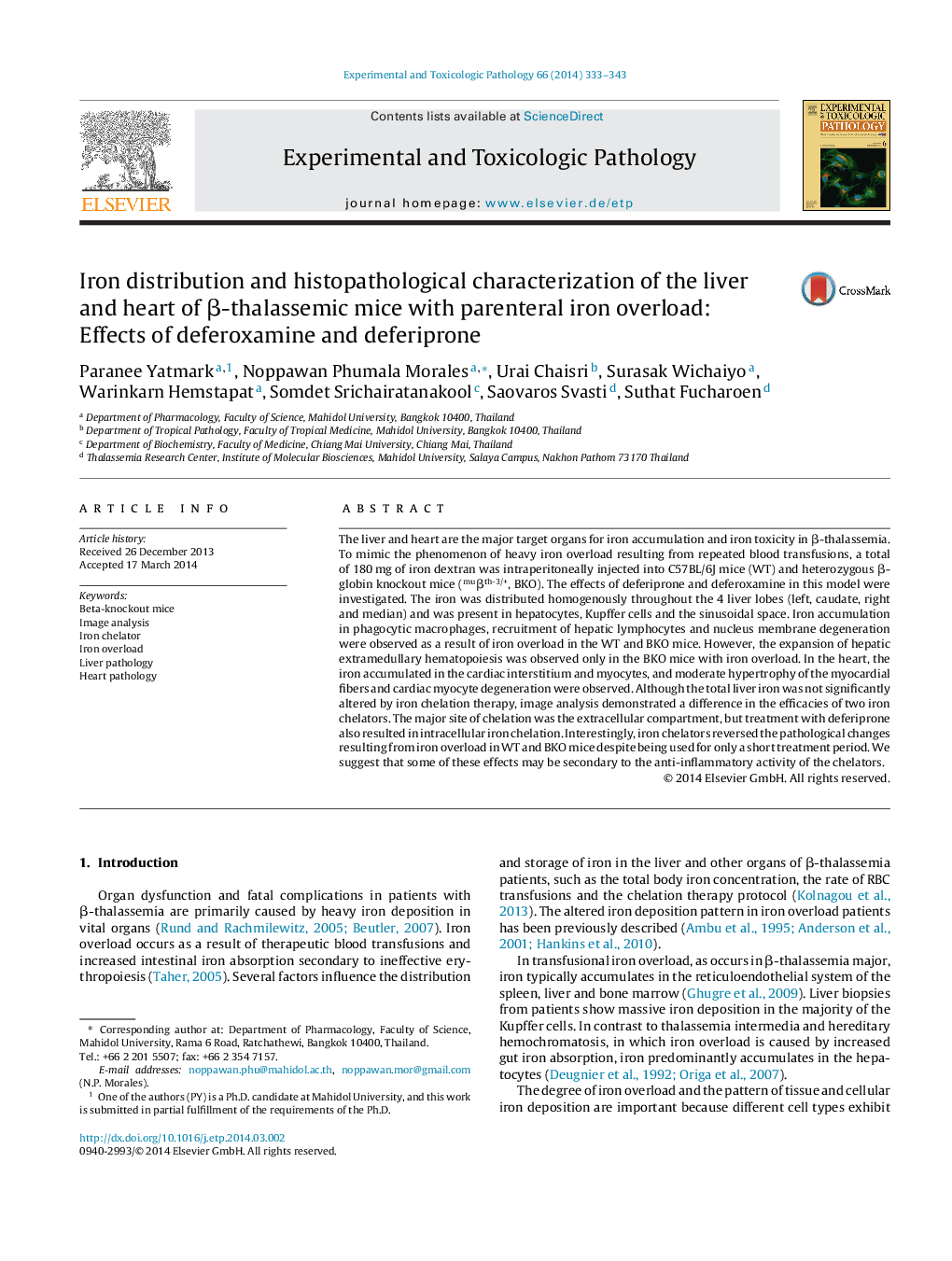| کد مقاله | کد نشریه | سال انتشار | مقاله انگلیسی | نسخه تمام متن |
|---|---|---|---|---|
| 2498933 | 1116480 | 2014 | 11 صفحه PDF | دانلود رایگان |

The liver and heart are the major target organs for iron accumulation and iron toxicity in β-thalassemia. To mimic the phenomenon of heavy iron overload resulting from repeated blood transfusions, a total of 180 mg of iron dextran was intraperitoneally injected into C57BL/6J mice (WT) and heterozygous β-globin knockout mice (muβth-3/+, BKO). The effects of deferiprone and deferoxamine in this model were investigated. The iron was distributed homogenously throughout the 4 liver lobes (left, caudate, right and median) and was present in hepatocytes, Kupffer cells and the sinusoidal space. Iron accumulation in phagocytic macrophages, recruitment of hepatic lymphocytes and nucleus membrane degeneration were observed as a result of iron overload in the WT and BKO mice. However, the expansion of hepatic extramedullary hematopoiesis was observed only in the BKO mice with iron overload. In the heart, the iron accumulated in the cardiac interstitium and myocytes, and moderate hypertrophy of the myocardial fibers and cardiac myocyte degeneration were observed. Although the total liver iron was not significantly altered by iron chelation therapy, image analysis demonstrated a difference in the efficacies of two iron chelators. The major site of chelation was the extracellular compartment, but treatment with deferiprone also resulted in intracellular iron chelation. Interestingly, iron chelators reversed the pathological changes resulting from iron overload in WT and BKO mice despite being used for only a short treatment period. We suggest that some of these effects may be secondary to the anti-inflammatory activity of the chelators.
Journal: Experimental and Toxicologic Pathology - Volume 66, Issue 7, September 2014, Pages 333–343